Today’s post is the second in a new series I began in January. In a nutshell the theme of these posts will be to focus on the cover art of mystery fiction, which being me will be predominately vintage. Each post will be centred on a specific image. In January I looked at cats on covers and this time round I am getting creative with artistic equipment. As the word equipment suggests, I am not really looking at covers which just have a painting on, but rather ones which include some of the tools an artist might use.
Unsurprisingly, the most common artistic equipment motifs were paint brushes, palettes and paint (sets and tubes). Often, they would be included because there was an artist in the book itself, such as with Andrew Garve’s Frame Up (1964):
However, these types of covers, whilst nice, did have a rather generic feel to them, since the artistic equipment was rather detached from any context. Situating the equipment within a scene produces a more interesting cover, in my opinion, though these too can follow familiar lines:

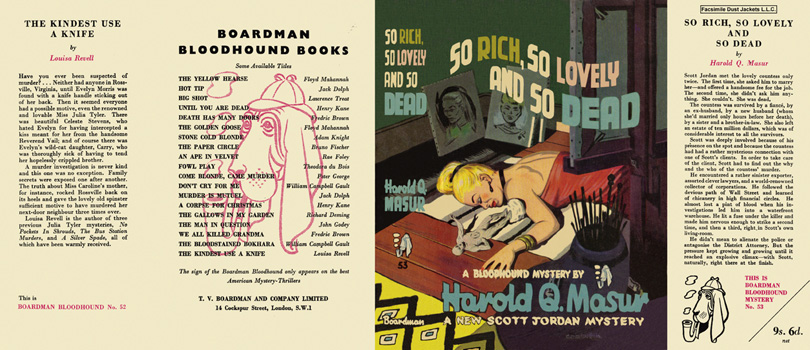
Added interest is also achieved when artistic equipment is used in an unusual way such as with Constance and Gwenyth Little’s Great Black Kanba (1944):
Who knows lizard painting could become my new lockdown hobby!
Shifting focus to palettes and paint specifically, again we find some more generic covers:
I think someone needs an anger management course…
But there are also some more creative examples too. I thought both these covers were interesting because they managed to embed the artistic equipment into the rest of the cover. With the first one we have a face made a part of the palette, whilst with the second one paint is used to finish off the title:


Finally, we have this one from Margery Allingham and whilst it is quite minimalist, I thought it’s striking use of colour was very effective:
Continuing with Death of a Ghost (1934), other artistic equipment has also been used in an interesting fashion on certain editions, in particular scissors and picture frames:


These covers move away from more realistic scenes and instead add a sense of mystery. I especially like the canvas which has a pair of eyes looking out from it.
Another less commonly used piece of artistic equipment is a wooden artist’s manikin, which seems a pity to me, as I think they rather lend themselves to mystery fiction and I think the inclusion of one is definitely the key strength of the cover below:
Whilst painters, paintings and painting equipment are the most frequent images used on covers, other forms of creativity and art crop up from time to time. One such area is photography and the first name which sprang to mind was George Harmon Coxe, who wrote a series featuring Kent Murdock, a newspaper photographer. Photography even occurs up in some of the titles, such as Murder with Pictures (1935).


Cameras feature on both of these covers and I liked the quirky nature of the first one, which is a Dell first printing, as the angle at which the camera is placed, bestows upon it the feel of animation and intelligence. The second cover is also interesting as it offers a literal new lens for looking upon a crime scene.
This is used even more effectively in the Borzoi Book edition of The Camera Clue (1937), which achieves a very eye-catching angle:
Then with a Dell cover, we also get to see what I think is a tray that is normally used for washing/developing prints:
Cartoonists also make an appearance on classic crime covers too, though somewhat less often. Jack Iams’ novel, Death Draws a Line (1948) features a cartoonist who is murdered, so his covers were a natural choice to look at:


I think I like the second cover more, as we get to see a cartoonist at work in more detail.
In my last Death Paints a Picture post I focused on a couple of specific titles and charted the way their covers changed over time, and I thought I would do the same here. The first text I chose was Agatha Christie’s Five Little Pigs (1942). Given the title quite a number of covers include our snout-nosed friends, but several also pick up on the fact that the victim is an artist who dies whilst he is working.
Starting with a couple of Dell covers from the 1970s, using the American title, this Christie mystery gets given quite a sinister vibe, with a skeletal hand holding the paintbrushes in one, and in another squirting out paint into the shape of a skull.


I felt this second one was especially creative. The same cannot be said for this next one from 1988, which is an example of the numerous generic art themed ones there are out there:
Jumping ahead to the 2000s, the more sanitised and less scary covers continue, though this time there appears to be a common usage of red paint. Is this a hint of blood? (Probably not given that this is a bloodless killing)


And for the curious the first cover is a Turkish edition. Continuing with the international theme, here is an Arabic edition from 2007, which manages to make the top of a hemlock plant (I think), into a blotch of paint as well. I enjoy these types of thing where an object is more than one thing.
This final cover is the most recent and provides a different focus, that of the artist at work. The two-colour scheme works particularly well and I was very lucky to get a copy of this edition from my sister last year.
The artist at work can also be found on the covers of a couple of titles by E. C. R. Lorac:
It’s hard to tell if his painting is going well or not, though I am leaning more towards not…
The Five Red Herrings (1931) by Dorothy L. Sayers is the other title whose covers I decided to chart. I thought given how many gazillion reprints it must have received, there would be plenty to choose from. However, I was a little surprised by the reduced creativity demonstrated for this particular cover. Is it due to the publishers involved in these reprints? I ask the question, as over 50% of the covers I selected originate from the same publisher, New English Library.
We start with one of their covers from the 1975, with its generic inclusion of a paint palette, and there are several other covers from different publishers which fit this category too.
Things get slightly more dramatic in the New English Library’s 1979 edition in which the paint brushes are situated in such a way that they look like they are skewering a fish.
Combining the themes of fish and paint also appear on a lot of other covers too, though sometimes this is less successful, such as with this 1982 New English Library edition:
Is it just me or does it look like the worst restaurant meal ever?
Not every cover is fish focused though and in 1995 Harper Torch released this edition, which attempts to add a sense of danger with its tempestuous weather in the background:
Additionally, I thought this cover by Harper Collins in 1986 was a bit more unusual due to the bird’s eye view it takes of the crime scene:
Ngaio Marsh fans need worry no more, as at last she will be getting a mention. After all she is a natural author to include given the fact her sleuth eventually marries an artist called Agatha Troy. We first meet her in Artists in Crime (1938) and no one will be surprised by the shed loads of covers which feature artistic equipment, (mostly palettes), generically. Instead I decided to share a couple of covers which I thought were more interesting:
I think I chose this first one, mainly due to the incongruity of the images on the cover. There is something darkly amusing and jarring having a woman contemplating a canvas, whilst an impaled corpse is not far away from her.
I liked this one, as whilst it is quite a simple picture, I felt it was clever to have a dagger slipped into the handful of paintbrushes, as until you look at the bottom of the cover, it blends in quite well.
When looking at covers for Ngaio Marsh’s mysteries, I expected there to be quite a wide range of appropriate covers to choose from. Yet I was surprised to find certain titles, which included Troy, did not then have covers which included any artistic equipment. Covers for Black as He’s Painted (1974) and Clutch of Constables (1968) are two such examples, with covers for the former being much more dominated by African masks and cats.
I found it to be a similar case when I turned attention to the work of Michael Innes, as a significant amount of his books have an art theme and he even has a series character sleuth who is an artist called Charles Honeybath. Yet despite this many of the titles did not have covers with artistic equipment on. Nevertheless, I did find some, the first being A Private View (1952). Under this title the most artistic it got was to have someone looking at a painting, but under the alternative title of One-Man Show, artistic equipment becomes more prevalent. For instance, there is this 1952 cover from Dodd, Mead & Company’s Book Club edition:
I felt it not only gives the suggestion of an art gallery, but it also uses the palette in an unusual way, placing contrasting victory laurels and black mourning ribbon upon it. Meanwhile this cover by Avon from 1970 is also quite eye catching with the face coming out of the paint tube:
Finally, there this intriguing 1983 cover from the Perennial Library. I liked the way this one gives a sense of mystery, as it has someone painting over a secret of some kind.
The next Michael Innes title I came across was Silence Observed (1961) and most of the covers for this title are not artistically themed. Yet I did find this 1992 cover from Gollancz, which has a gavel pushing red paint out of tube:
I wondered if the paint coming out was deliberately made to look like small pools of blood.
The final title I selected was Appleby and Honeybath (1983) and the 1984 Penguin edition includes one of those less frequent appearances of the wooden artist’s manikin:
I liked how the manikin is taking the place of a corpse and I am surprised manikins have not been used more often for this role on mystery covers. *Cue a multitude of blog post comments evidencing the hordes of such examples which have escaped my attention*
The most interesting discovery, I made for this post, was a series written by Willetta Ann Barber and R F Schabelitz. I came across their work on John’s blog Pretty Sinister, (so my discovery was somewhat like Columbus’). This writing duo wrote seven Christopher Storm detective novels and John lists their titles as follows:
- Murder Draws a Line (1940)
- Pencil Points to Murder (1941)
- Drawn Conclusion (1942)
- Murder Enters the Picture (1942)
- The Noose is Drawn (1945)
- Drawback to Murder (1946)
- The Deed is Drawn (1949)
Christopher (a.k.a. Kit) Storm is a Manhattan commercial artist and he also works parttime as a police artist, sketching crime scenes and evidence as required. Yet in the first book, Murder Draws a Line, his relationship with the police becomes far less cordial, as a body turns up in his studio. That is the sort of thing which does make the police rather suspicious of you… An additional novelty with these books is that, according to John, they ‘are unique in all of detective fiction because they include Kit’s sketches (provided by artist Schabelitz) some of which have clues to help the reader solve the mystery. I believe these novels were the first of their type.’ John includes the example below in his review:
This aspect of the series certainly appeals to me and I think I would like to read one at some point. But given how rare they are, I may have to hope one of them gets reprinted someday.
Well done for making it to the end of my rather eclectic exploration of artistic equipment on mystery covers. There will be thousands I have missed, so if you have a favourite and you can’t see it, then do share with us below. One thing I was disappointed in not finding, was a cover with a sculptor at work. I know of some books which contain such a person, such as Maureen Sarsfield’s Murder at Shots Hall (1945) and Agatha Christie’s The Hollow (1946), but I couldn’t locate any covers which featured them. I am probably overlooking a really obvious alternative example, so if you happen to know it, let me know!
Don’t forget to place your vote for which theme I look at next month. You can find the poll here.


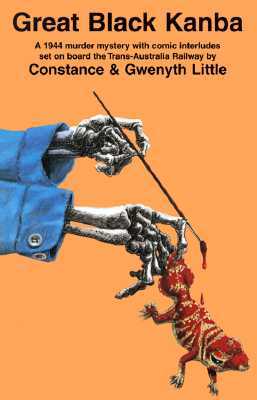







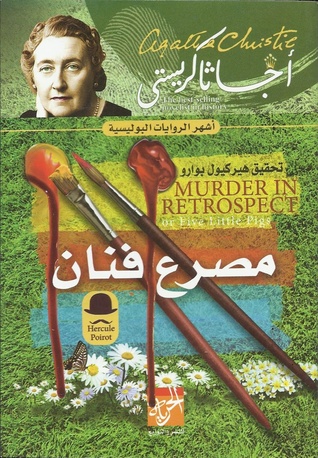
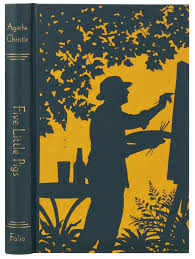




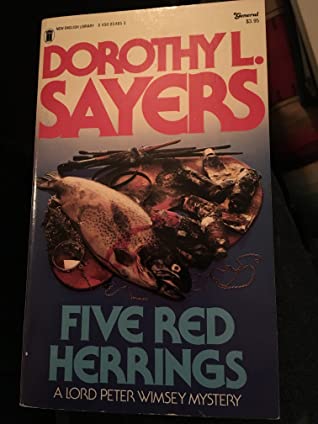


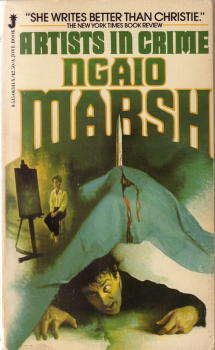








I’ve got all four of the Barber & Schabelitz novels sitting on one of the TBR mountains. Back before the pandemic started, Brad & I had talked about reading the first one in concert….but we never got to it.
LikeLiked by 1 person
ha I should have known you would have copies of all of the hard to find Barber and Schabelitz books! This once more confirms my suspicion that you have all the books in your TBR mountains. Do you give different peaks or ranges names?
LikeLike
I lucked into the first two that I bought–they were sitting there innocently on the bookshelf at my favorite used bookshop. I had no idea what I was getting, but they were the digest-sized Penguins and I knew I couldn’t pass them up. Murder Draws a Line was the last one I bought–spending a little more than I really wanted to for the hardback, but I did want to start from the beginning if I could. Now we’ll see if I can get hold of the last three….
LikeLiked by 1 person
I wish you luck! But yes I am very envious of your used bookshops, which seem to be like a literary treasure trove. I’m lucky if I find a Wentworth or a Marsh lol But I try to console myself that my bank balance and my TBR pile are very grateful for my reduced access to vintage crime fiction.
LikeLike
Agreed! The Allingham with the scissors and the canvas w/ eyes is such a cool cover! Thanks for sharing this!
LikeLiked by 1 person
Glad you enjoyed this post!
LikeLike
There was an early sixities Dell Cover for The Hollow (published in the US as Murder After Hours) with a sculpture in process. The sculpture is a horse with a gun suspended inside. Not really a visual spoiler since the significance wasn’t apparent until the end. Anyway, a striking cover since I could immediately recall it after 50 plus years. I hope this works as a link – Dell Cover for the Hollow.jpg
LikeLiked by 1 person
Don’t think the link has worked but I know which one you mean. I did consider that one but I wasn’t sure it fully fitted my remit of artistic equipment, as I had been steering away from covers which just featured a piece of artwork. But that might be the best cover we are going to find.
I think Dell did a good job over the years of producing memorable covers.
LikeLike
I haven’t paid as much attention to the Ngaio Marsh books I have but would have thought like you, that they’d explore art a bit more with Troy being an artist. I don’t think the edition of Clutch of Constables I have had any art/painting on the cover either, and that certainly merited it
LikeLiked by 1 person
Yeah I expected at least one or two covers to include some quite of art feature even if it was a generic image, but there didn’t seem to be any and I was looking on Google and on Goodreads, as the latter often lists the other editions readers have added.
LikeLiked by 1 person
I never could have imagined you would find so many covers for this theme. I especially like the ones for Murder in Retrospect.
I wish I had all the George Harmon Coxe Dell mapbacks. I do have one, but it has an hourglass on the cover, and I have the Perennial Library paperback with the front of the camera. (My husband is into cameras and photography so I got interested in the Kent Murdock series.)
LikeLiked by 1 person
Yes it was trickier to find appropriate and interesting covers for this piece, than it was for the cats one. I was pretty much tripping over them, there were so many! The Dells are good, especially for the Coxe titles you mention. They certainly grab your attention!
LikeLike
I would have thought a Christie cover done by Tom Adams would have featured artists. I can’t locate my copy of his works to check it out.
LikeLike
[…] article I wrote on Juanita Sheridan’s Lily Wu. This month’s Death Paint’s a Picture theme was Artistic Equipment and based on votes cast for next month’s theme, March’s topic is going to be modes of […]
LikeLike
[…] cover art for mystery novels and each time there will be a specific focus. February’s theme was artistic equipment and in January I looked at cats. Like the last vote you have five options to choose from, many of […]
LikeLike
Somehow I missed this post when it went up a couple of weeks ago, which is ironic since I’d been especially looking forward to it. Very entertaining! (And it looks like I can now add some titles to that Goodreads list about mysteries involving the art world—thanks!)
LikeLiked by 1 person
Your list was a helpful starting point for locating titles, so it is nice that my post has returned the favour and given your list some suggestions lol
LikeLiked by 1 person
[…] Today’s post is the latest instalment in my Death Paints a Picture series, which I started doing in January. These posts aim to examine the cover art of (predominantly vintage) mystery fiction. Each post explores one specific theme and so far these posts have looked at cats and artistic equipment. […]
LikeLike
[…] February: Artistic Equipment […]
LikeLike
[…] Artistic Equipment […]
LikeLike
[…] February: Artistic Equipment […]
LikeLike
[…] February: Artistic Equipment […]
LikeLike
[…] February: Artistic Equipment […]
LikeLike
[…] February: Artistic Equipment […]
LikeLike